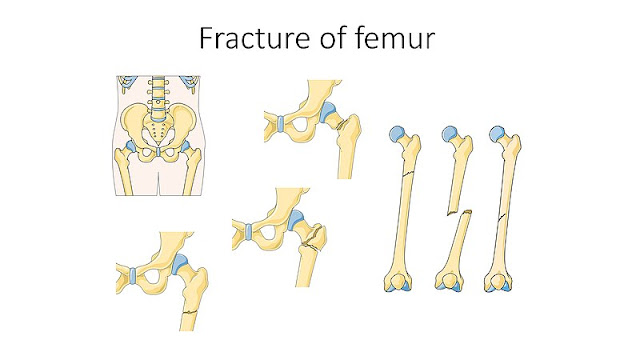The femur is considered one of the strongest and largest bones in our body and we know it more commonly as the thighbone. Its length extends from the knee joint up to the hip joint and because it supports all the weight of our bodies, it is very dense and strong and would require strong force to fracture it. However, with such strong impacts and trauma, the femur can also be fractured and this usually happens during car accidents or falling from high places. Factors such as osteoporosis, infection in the bone structures, or tumor on the femur can also make it fragile and weak. When femur fractures are caused by these conditions, the results of the fractures are called the pathologic femur fractures.
Femur Fracture Types
There are generally three broad categories of femur fractures and these are:
• Proximal femur fractures. This is also known as the hip fractures wherein the upper-most part of the thigh bone that is next to the hip joint is involved. This kind of fracture is also subdivided into two different types of hip fractures and these are the femoral hip fractures and the intertrochanteric femur fractures.
• Femoral shaft fractures. This is a form of severe fracture injury to the femoral shaft that usually happens during accidents such as high-speed motor, car collisions, or traumatic falls. This is considered a major injury to the femur.
• Supracondylar femur fractures. This is an injury above the knee joint and the fracture damaged the cartilage surface that is on the knee joint. Usually patients who sustain this kind of injury are most likely to develop knee arthritis during their later part of their lives.
Diagnosis
The orthopedic surgeon will examine the injured area and will make an evaluation about the status of the circulatory and nervous systems of the patient. Different angles of x-rays will be taken up which include the knee, leg, pelvis, and hip to determine which of these are also affected.
Causes
Although the femur or the thighbone is a tough bone to break, a great deal of force such as during motorcycle accidents or a great fall can fracture the bone out of place. Because this is such a large bone, femur fractures are always considered as high-risk injuries that could be life threatening. In some children who are not into sports or active with games, a fracture in the thighbone is usually caused by physical abuse.
Symptoms
You will easily know that a person has a fractured thighbone although the bone did not break and penetrate through the skin by observing the following symptoms:
• There is severe pain on the injured part and the person experience more pain when he or she tries to move the leg.
• There is the inability of the person to move his injured leg.
• Deformity usually occurs on severely fractured femur.
• There is swelling on the injured area immediately after the accident.
• The skin will also undergo discoloration from red, blue, to black in color.
Femur Fracture Treatment
Just like all bone fractures, femur fractures must be returned to their proper bone alignment by casting it until it is completely healed and in place. However, the treatment methods to be used will depend on the result of the x-rays. Two kinds of treatment are used on femur fractures and these are the non-surgical treatment and the surgical treatment. With thigh fractures that do not have fragments, the ‘traction’ is used as the traditional non-surgical method. This also involves subjecting the leg with a leg cast. The surgical treatment is done for severe cases when bones are fractured in pieces. Metal screws will reattach the fractured bones or a rod will be placed inside the bone if necessary then the leg will be put in cast as well. Therapies must always follow after the recovery of the fracture.
Prevention
To avoid getting thighbone injury, use every precaution whenever you will be involved with high risk sports so protective gears must always be worn. Also use your seat belts once you drive and children although seated on the back must still be secured by seat belts. If you are on a cane, always use solid and reliable canes so that falls can be prevented which may cause you thighbone injury. For those who have weakened bones consult your doctor regarding what precautionary measures you could take to prevent sudden femur fractures.
When To Call a Doctor
You will know when to call medical help when you are no longer able to walk after an accident because of unbearable pain in your thigh or leg. If you see that there is swelling on the thigh and the area becomes discolored and numbness occurs, seek medical help as soon as possible. A break in the bone usually gives out a sign in the form of fever as well. Needless to say, a broken and protruding bone on the thigh is always considered an extreme emergency case so the patient must be rushed to the hospital at once before he or she goes into shock.
Other fractures related to this are distal, spiral, supracondylar, neck of femur, stress, their repair and surgery.

Comments
Post a Comment
Please do not enter any spam link in the comment box.